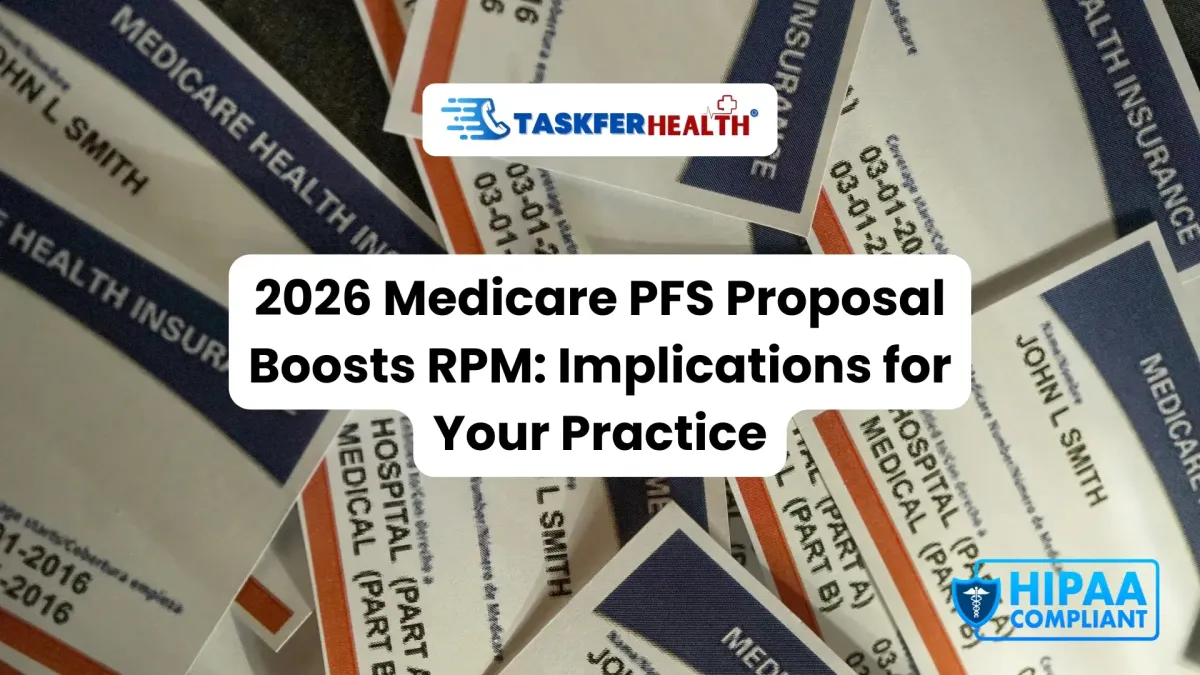
2026 Medicare PFS Proposal Boosts RPM: Implications for Your Practice
A Brief Retrospective: The Basis of RPM Billing
To grasp the significance of the 2026 proposals, it's essential to revisit the structure of the current Remote Patient Monitoring (RPM) program. Launched around 2019, the foundational RPM CPT codes established a reimbursement framework that, while innovative at the time, contained several inherent limitations.
Key RPM Codes to Date
The primary RPM codes currently in use include:
CPT 99453: This code covers the initial setup and education for patients on using RPM devices, billable after 16 days of measurements within a 30-day timeframe.
CPT 99454: This code pertains to supplying the RPM device for a 30-day period. Notably, it requires that the device records and transmits data for at least 16 days within that month to qualify for billing.
CPT 99457: This code accounts for the first 20 minutes of clinical staff engagement in interactive communication and care management with the patient each month.
CPT 99458: This code is for each additional 20 minutes of staff time.
Although this framework has enabled proactive home care for countless patients, the "16-day rule" for device billing and the "20-minute minimum" for time have posed significant operational challenges. Some clinical conditions do not necessitate 16 days of monitoring, and important interactions lasting 10 or 15 minutes could not be billed.
Revolutionizing RPM: Key Updates in the 2026 Proposed Rule
The proposed changes for 2026 aim to directly tackle these limitations, leading to a more adaptable and clinically relevant RPM program.
1.Increased Flexibility in Device Supply: Introduction of a New "2-Day" Rule
The Centers for Medicare & Medicaid Services (CMS) intends to eliminate the strict 16-day requirement for CPT 99454. The proposed new structure includes:
New Code (99XX4): This will introduce a new device supply code that allows for remote monitoring over a period of 2 to 15 days within a 30-day window.
Revised Code (99454): The existing code will now officially cover monitoring for 16 to 30 days in a 30-day period.
The most exciting aspect of this proposal is that CMS suggests the new 2-15 day code will be reimbursed at the same rate as the 16-30 day code. If finalized, this change would represent a significant advancement, recognizing that the true clinical value lies in providing patients with the ability to monitor their health throughout the month, rather than merely counting the number of data transmissions.
2. Enhanced Time Management Efficiency: Introduction of a New "10-Minute" CPT Code
The rigid 20-minute requirement for care management is being revised to improve efficiency in time management:
New Code (99XX5): This proposed code will cover RPM treatment management services lasting between 10 to 20 minutes. It is expected to have a work Relative Value Unit (RVU) of 0.31, which is approximately half the value of the existing 20-minute codes.
Reimbursement Stability: In a notable win for remote care providers, the Centers for Medicare & Medicaid Services (CMS) decided against a recommendation from the American Medical Association to reduce the reimbursement rates for the current 20-minute codes (99457 and 99458), thus preserving their existing values.
If these changes are finalized, they would not only ensure stability for current programs but also create a more efficient way to secure reimbursement for shorter yet essential patient interactions.
Implications of RPM Expansion for Your Practice
These proposed changes extend beyond mere billing codes; they aim to empower healthcare providers to create more effective, efficient, and inclusive Remote Patient Monitoring (RPM) programs. Here are some key points to consider:
Broadened Access to RPM for Patients
The introduction of a new 2-day threshold for device billing will enable many patients who were previously excluded to access RPM services. For instance, patients using GLP-1 medications for weight loss may only need weekly weigh-ins, while postoperative patients might require only a brief monitoring period. This change allows you to enroll these individuals and receive reimbursement for the essential oversight you provide.
Enhanced Operational Efficiency
The new 10+ minute time code ensures that your clinical staff is fairly compensated for their efforts, even during short check-ins. This adjustment will eliminate the issue of unbilled time during a 15-minute call, enabling you to tailor care plans more accurately to each patient's specific needs.
Increased Revenue Potential and Program Scalability
With the capacity to enroll a larger patient base and bill more effectively for your staff's time, your practice can more readily implement and expand a financially viable RPM program. The assurance of stable reimbursement for existing codes will provide the confidence needed to invest in and grow your remote care initiatives.
Better Patient Outcomes
Ultimately, a more adaptable RPM program translates to greater effectiveness. By customizing monitoring frequency and clinical interactions based on the actual needs of patients rather than adhering strictly to rigid billing requirements, you can enhance patient engagement, improve adherence, and achieve long-term positive health outcomes.
A New Era for Remote Patient Monitoring: Greater Flexibility and Accessibility
The proposed rule for the 2026 Physician Fee Schedule (PFS) conveys a strong message: the Centers for Medicare & Medicaid Services (CMS) recognizes remote patient monitoring as a fundamental element of contemporary healthcare. If these changes are implemented, they will fully realize the potential of RPM, transforming it into an even more effective resource for managing chronic conditions, enhancing patient outcomes, and fostering a more efficient healthcare practice.

